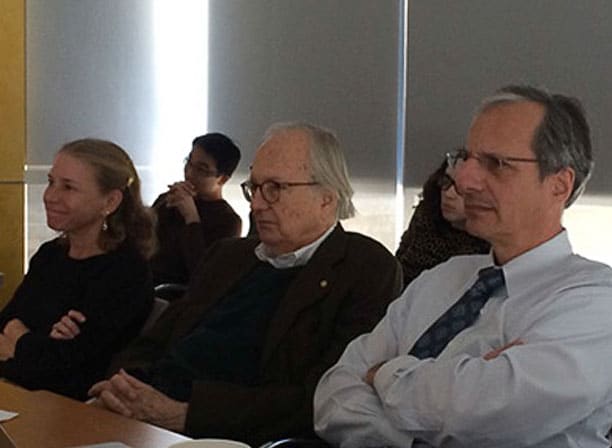My apprenticeship from my father (pictured above, center), James Darnell, happened at the dinner table. There I first learned the vocabulary of science. By the time I was 12, I was pretty convinced that ‘‘polyadenylation precedes splice site selection.’’ Growing up with the second language of science facilitated the transition from fluency in terminology to fluency in scientific thought. There was no confusing transcription and translation in my family! Fast-forwarding, my father and I now think critically together about transcriptional dynamics and RNA regulation versus the bland information present in steady-state RNA analyses.
At our dinner table, once a month my mother—an intellectual, but not a scientist— would ask my father what was new in the lab. Her question and her interest itself I always found wonderful. Explanations using jargon underscored the difficulty of putting the complex into understandable words. The importance of simple communication is a lesson I carry with me to this day.
Our dinner table and house was also full of people I knew were scientists, but who I thought of first as people. Experiences like waking up in the morning and jumping on a sleeping Lennart Philipson, bringing out his warmth and mirth, allowed me to experience scientists’ humanity first-hand. The privilege of seeing the warm people underneath towering scientific personas, whether it was Lennart, Harry Eagle, David Baltimore, Aaron Shatkin, Jim Watson, or Bob Roeder, even as I overheard the intensity of their science discussions, led me to see intellectual intensity as a natural part of life. I knew their shared secrets— humanity underlying shared scientific passion. And this has been the biggest privilege for me—aiming to emulate their idealism rather than aiming to become a persona.
Cell 163, November 19, 2015
